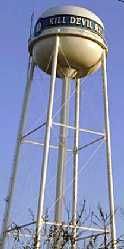Ever stop to wonder how much water goes down the drain each time you take a shower, throw in a load of laundry or just give your hands a quick wash? For the average U.S. household, the answer is quite staggering: close to 280 gallons (1,060 liters) a day [source: Environmental Protection Agency]. More than half of that can potentially be reused for irrigation in the place of fresh tap water.
After all, why waste all that drinkable water on your yard when dish water will do instead? Why drain your tub directly into the sewer system when there are thirsty plants right outside your door?
Advertisement
That's the idea behind gray water reclamation -- simply getting the most out of your water through reuse.
The water use in most homes has long been thought of in terms of clean white water coming in and sewage, or black water, going out. Gray water, as the name implies, is something in between. By most domestic definitions, gray water is tap water soiled by use in washing machines, tubs, showers and bathroom sinks. It's not sanitary, but it's also not toxic and generally disease free. Gray water reclamation is the process by which households make use of gray water's potential instead of simply piping it into overburdened sewage systems with all the black water.
The advantages of gray water reclamation for your wallet include lower water and sewage bills. Additionally, reusing gray water's otherwise wasted nutrients from soap (nitrogen and phosphorous) and food (potassium) can sustain plant life and recharge topsoil. However, recycling gray water requires more effort, brings the risk of contamination and pollution if mismanaged, and adds installation and upkeep costs for more involved systems. Also, gray water should not be used where children or pets may come into contact with it.
So how can the water that goes down the drain after a bath be of any use to plants? Read on to find out.


